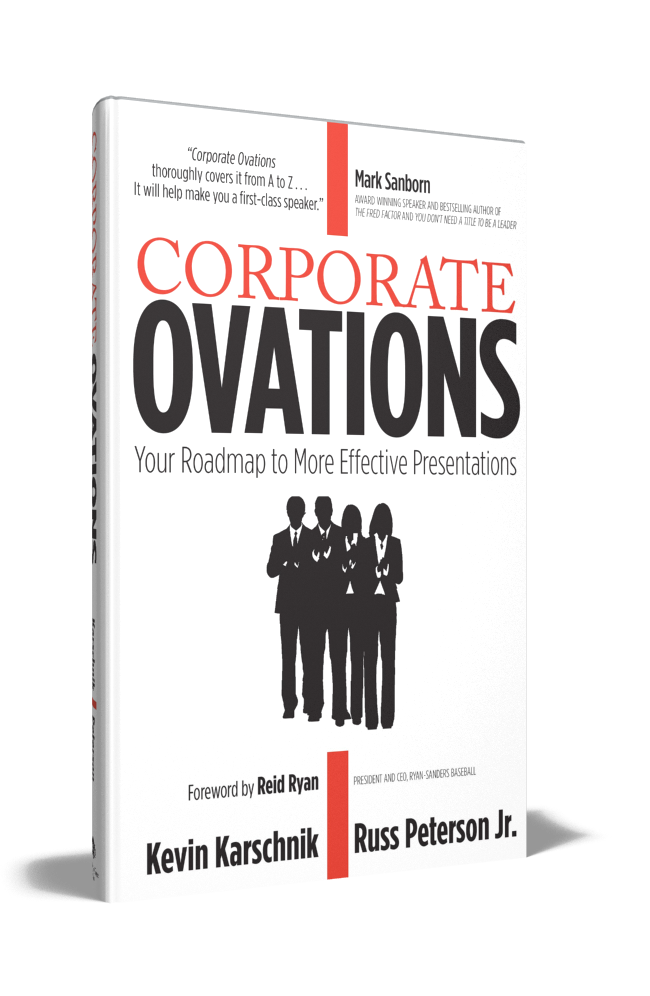Golf has always been a game of both simple and complex. Speaking persuasively to an audience can feel the same way sometimes. For an audience to commit to following a leader, influence will always play a role. Since I know many leaders love to hit the links… I’ll use golf as the metaphor to teach the influence process. Now I only wish I could persuade my tee shots to move more into the fairway, but golf balls don’t listen too well.

Visualize the shot
Even if you don’t play golf, I’m sure you’ve heard this one before. You need to visualize success before you swing that stick. Without an idea of what you want to accomplish, golf swings are all over the place. As a leader, speaking persuasively should be summarized into one key point. As an exercise for leaders, I have them summarize their entire message in 6 words or less. It is the point or the theme of the entire presentation. It can even be catchy to make it easier to remember, but that’s not required.
- “Service today means revenue tomorrow”
- “Cost reduction. Cycle time. Customer Service.”
Tee it up!
No golf explanation needed here. The ball is set on the tee and the golfer takes the proper stance to address the ball. As a speaker, this is where you set up the problem you’ve observed. You tee up the conversation by explaining the issue you’re concerned about. Before you finish teeing up the conversation, you need to pull the audience into the situation, as well. Show how everyone is in the same boat.
What’s the issue you’ve been struggling with in the past? What is the predicament you’re in today? What seems to be the problem? How is the audience also in this poor situation?
Mind your backswing
Anyone else have a problem with this part of golf? I know I do. When I don’t pay attention to the backswing, my shots become poor at best and ridiculous at worst. In a golf backswing you use motion and tension to accumulate stored energy. At the peak of the backswing, the tension is ready to be released in a powerful but controlled forward motion. Without a proper backswing and accumulation of power, the forward swing doesn’t get you the distance or control you want. And for me, it earns me the fully expected and definitely earned verbal jab from someone else in our foursome.
As a speaker your backswing is the accumulation of energy through tension for your audience. Speakers do this at the start of a message by drawing the audience into the bad situation emotionally. The goal is to create tension in the audience. How can you pull your audience into the issue you’ve teed up and create a feeling of uneasiness? How can you show them they share in this same struggle? What part of the struggle touches each of them personally? How do you and the audience feel because of the undesirable situation?
Examples:
- “I’m sure we’ve all had to deal with an upset customer before and no one likes being on the receiving end of an irate customer.”
- “Even without having all the information, we’ve all had to make a decision on which direction to go. It’s not easy.”
Swing!
This is where you keep your head down, eye on the ball and release all that stored energy!
For a speaker, this is where you take away all that tension you’ve built up in your backswing. The audience feels the uneasiness of the situation and they want it to go away. You swing by giving them the path forward. It could be a single item or a series of steps, but it’s the plan to remove the bad situation.
It could be a whole new direction for the company or it might be a simple change to a current process. Either way, the audience wants relief from the accumulated tension. When the leader takes that tension away, the audience feels the importance of implementing the solution. Now, to set this plan in motion you need to show them the very first step.
Follow through with your shot
I found out the hard way after too much amateur guidance from my golfing buddies and after several sessions with a pro… the shot doesn’t end when you strike the ball. My shots were notorious for either slicing or hooking. If I was lucky, I’d only end up with a slight fade. The follow through after the shot can dramatically affect whether or not you put the ball where you intended.
When speaking persuasively, the follow through with the audience is really just the next step. Don’t overcomplicate this for your audience. Just give them the very first step they need to take. Where does this solution begin? Where should they start?
See the success
In golf, when the first 5 steps go well, you get to appreciate the sight, sound, and feel of a well-hit shot. As a speaker, the final step is to get your audience to imagine the day when the issue is gone because of the action they took. Help them imagine that day as vividly as possible. How will that feel? Can you provide a visualized “imagine if” story? A strong feeling will give them the momentum they need to take their first step. Leaders are meant to encourage and build up. How will you do that for your team?
Eventually every leader will turn the conversation toward the future. That’s just what we do. We look at the past to learn, we look too the present to get things done, but we look to the future to create a better tomorrow for the people we lead.
Which part of this process do you struggle with the most? For me it’s step one, the visualization.
Working hard to create a better tomorrow for my audience,
Russ
Not a Twitter user? Then let’s connect on LinkedIn.
Not a LinkedIn user either? Let’s connect via my Facebook page!
Are your presentations closing eyelids or deals?
Visit iSpeak’s website for a list of workshops and descriptions.
 Find some daily inspiration here. Get my FREE eBook on Sales and Leadership Inspiration.
Find some daily inspiration here. Get my FREE eBook on Sales and Leadership Inspiration.
Russ Peterson Jr. is the co-founder and Managing Director of iSpeak, Inc. – An award-winning professional development training company. Russ is a speaker, international trainer, and published author on Professional Sales Communication and Business Communication. He delivers workshops, keynotes, and personal communication coaching services to business professionals in the US and around the world. You can connect with Russ directly through Twitter, Facebook and LinkedIn.



Please note: I reserve the right to delete comments that are offensive or off-topic.